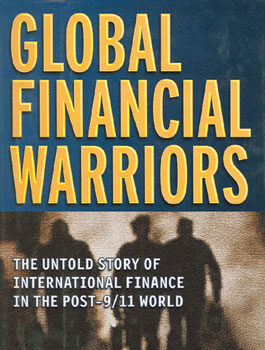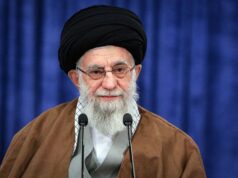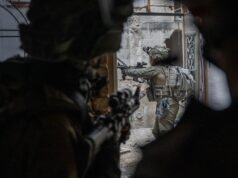Freezing Terror
What was the first strike against terrorism following the attacks of 9/11? If your answer relates to the U.S. military response to al Qaeda in Afghanistan, think again.
According to former Undersecretary of the Treasury John Taylor, the “first shot in the global War on Terror” happened just two weeks after 9/11 when President Bush signed Executive Order 13224, freezing terrorist assets here.
Bush’s order thrust the Treasury Department into the deep end of the War on Terror and John Taylor’s account in “Global Financial Warriors” documents these early efforts to combat terrorist financing when “follow-the-money” was still a new skill for Treasury analysts.
Initial Treasury efforts to freeze terror funds were successful. Taylor cites a “high participation rate of countries that would join the United States in freezing assets.” Many “came as close as possible to a nearly simultaneous freeze” – to prevent asset flight. Working within the system that Taylor helped create, 172 countries issued freezing orders, 120 countries passed new terror-finance laws and about $137 million was frozen.
During Taylor’s tenure, it was easy to brag about freezing terror-financing assets, but today the Treasury Department disavows such measures. Instead, it claims that the simple threat of U.S. action is enough of a deterrent.
Pessimists note that frozen assets today only total some $300 million. Meaning it took five years to freeze $163 million, when it took just a few months to freeze $137 million.
Why? Terrorist financiers now see the United States as a tougher operating environment. That’s a verifiable win.
But the international community hasn’t done enough to freeze assets abroad, making U.S. efforts less effective. Obstinate Gulf countries like Yemen and Saudi Arabia, and even friendly nations such as South Africa and the United Kingdom, have responded slowly to freeze the assets of known terrorists in their territories. The Europeans won’t move against Palestinian terrorist groups Hamas or Hezbollah, and the United Nations allows terrorist-friendly states to stymie important global efforts with bureaucratic and political stalemates.
America may now be a tougher place for terrorists to move money, but contrary to what Taylor had in mind, there are other growth opportunities worldwide.
By the time Taylor left Treasury in 2005, he had successfully fund-raised for Afghanistan’s reconstruction and worked to achieve financial stability in Iraq amidst war and insurgency. But his crowning achievement may well have been his role in earning the grade of A-minus issued in the final report of the 9/11 Commission for America’s counterterrorism finance effort.
Though he probably claims too much personal credit, Taylor explains that, in establishing Treasury’s new role, he was also responsible for overcoming the “indifference of higher-level Treasury policymakers” and avoiding “destructive ‘turf battles’ between agencies or departments.”
Unfortunately, Taylor left some unfinished business. Treasury still engages in turf battles with the State Department and other intelligence agencies, and departments within Treasury still argue amongst themselves.
Jonathan Schanzer, a former Treasury intelligence analyst, directs policy for the Jewish Policy Center. He’s author of “Al-Qaeda’s Armies: Middle East Affiliate Groups and the Next Generation of Terror.”






